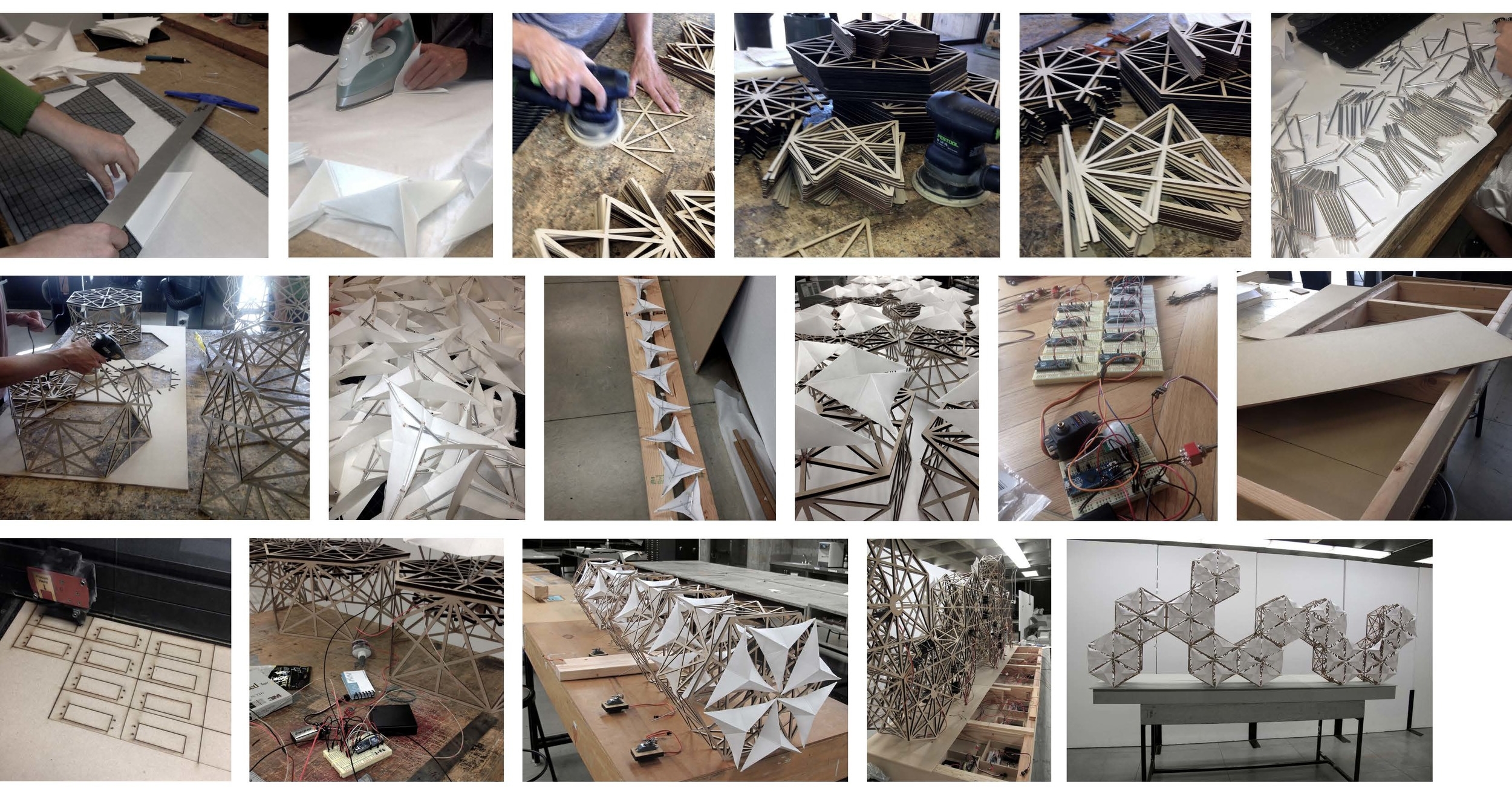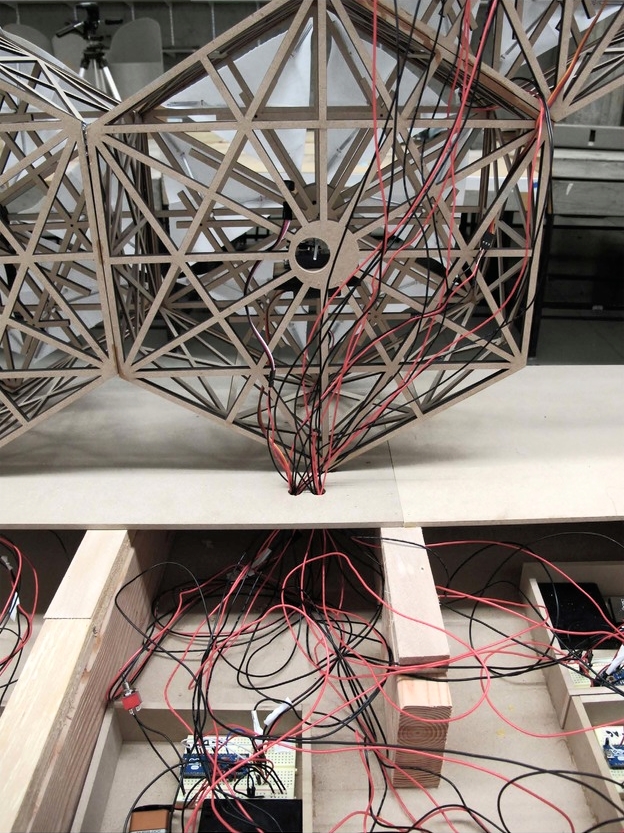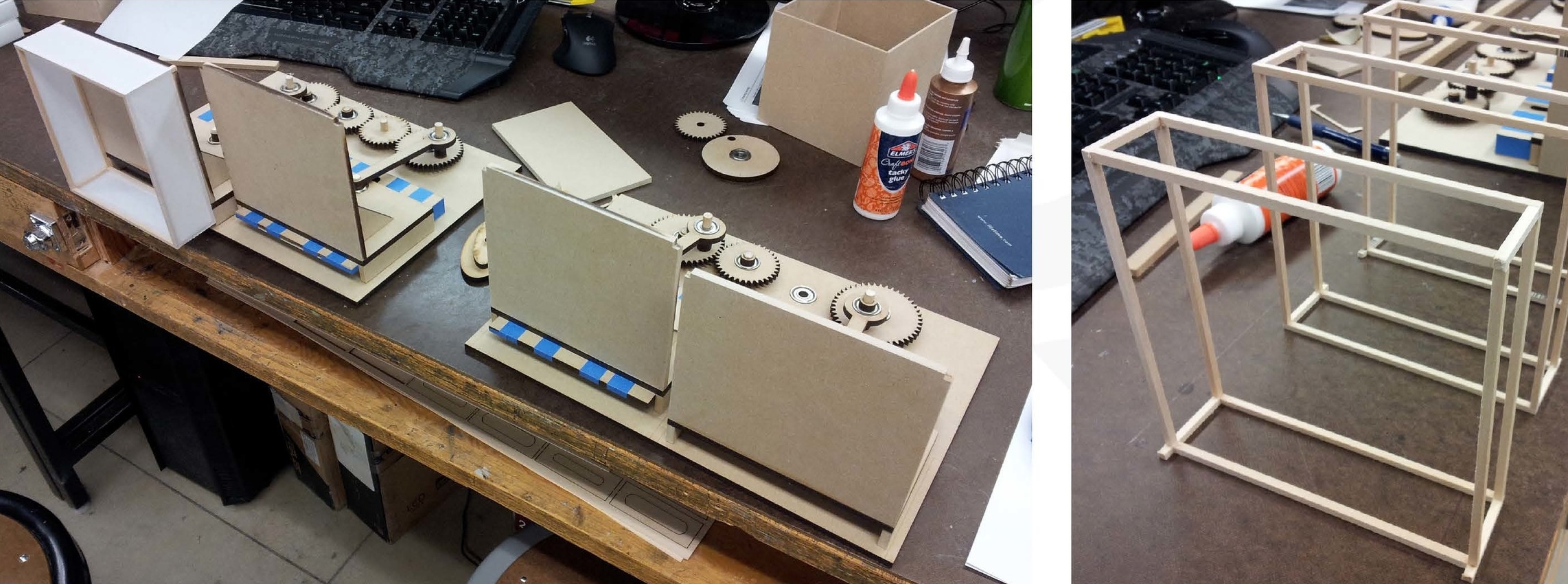Sonic Responsive Systems
Masters of Architecture Design Studio
Session Studio CA+P | Fall 2013 | ARCH 6005-02
College of Architecture and Planning, University of Utah
This studio is a research studio that integrates digital aural composition with physical space design. The objective of the studio is to produce a sonic design; whether it be musical, soundscape, or tapping in to the sound energy generated by a space. In essence, the archetype will integrate space design as a musical instrument, and the space’s ‘musical’ composition, as one intertwined paradigm. The work progress adopts a transversal approach and, uses the conceptual and technological bridges that have been therefore naturally created between science, visual arts, mathematics, and music. Therein, creating a visual and aural synthetic experiment, in which the perception of sound will be closely related to the various forms that a surface. There is a series of challenges to be tackled. The obvious one is the nature of sound and to grasp the dynamic characteristics of a visually indiscernible design tool. Another issue that needs to be tackled is employing digital tools and physical kinetics implementation. Students will be introduced to electric engineering basics, such as motor fittings and audio transducers, which is vital to transform a surface into a dynamic sonic space.

Blossoms
Team: Sarah Steven, and Arave Winkler
The physical environment is not only experienced through visual sense. We have been encouraged in this studio to consider that architectural design is found to be successful when it manipulates one or more perceptions in order to convey a certain aesthetic significance. We decided to manipulate human infrared energy to create a sculptural choreography. The captured human energy triggers motion in the opening and closing of the blossoms which in turn layers with a simple tone to create a visual, aural, and human responsive as one intertwined paradigm. The layered and open structural framework reflects this intertwining and encourages the visitor to step closer to see what’s going on and interact further.
Movox
Team: Tyson Smith, and Matt Pattberg
We decided we were going to design a wall system that has boxes popping out in reaction to sound. Initially we will react to a hand clap, but we plan to branch out into other frequencies/responses as we become more adept at programming. We have also thought that we will incorporate some sort of lighting into the boxes to create further variation and patterning. Using the gear assembly that worked well we came up with a train type method that worked quite well. Using this in combination with driving rods to transfer the motion to the adjacent unit we ran into more issues. The length of the rod would need to be adjustable to allow for the inaccuracies of us and the laser cutter. To alleviate this we decided that it would be best to transfer
the motion horizontally and vertically with the use of gears. The gears allow for the most tolerance and ease of operation.
Piano Wave
Team: Spenser Anderson, and Matthew Rogers
Our concept was creating a moving wave using materials that are not generally associated with waves. To create a dynamic, fluid movement that moves in a set pattern to give an illusion of moving water.
Flux
Team: Pingting Wei, and Kristi Faught.
HydroE
Team: Ray Bryson, and Matthew Reeves.
“one cannot return twice to the same river”
... but what would one see?
what will a wall of unmoving water droplets
contribute to architecture
...or when they move upstream?
Flutter In the Rain
Team: Emily Nybo, and Tal Rice
While researching precedent studies we were drawn more to the designs that create sound rather than the design being produced from a sound. From this discovery, we formulated more ideas all with one intention in mind. The intention behind the design would be to create an array of the same sound. For the design chosen this will be accomplished through rotating objects of various materials and/or sizes. These objects would act similarly to gears where they rotate and affect one another. The different materials and sizes may all work in unison yet have their own, individual characteristics.






































































































